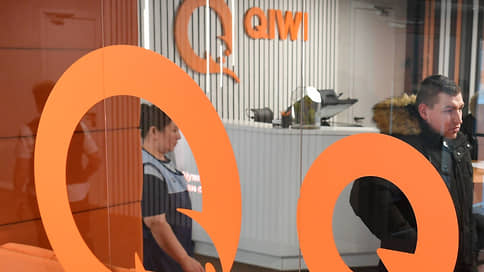Qiwi Bank must have enough assets for all creditors
[ad_1]

The potential volume of claims of Qiwi Bank creditors could reach up to RUB 35 billion. The main amount was in the accounts of legal entities, as well as in the wallets of individuals who do not fall under the terms of deposit insurance. According to experts’ estimates based on the bank’s reporting, the volume of liquid assets on its balance sheet, including securities, should be sufficient to pay all creditors. Moreover, the owners also have a chance to receive the remaining funds – they will go to Qiwi JSC.
The total volume of Qiwi Bank’s obligations to its clients is estimated at several tens of billions of rubles, according to the bank’s reporting, data from the Deposit Insurance Agency (DIA) and expert estimates. In particular, the volume of funds of legal entities (account 407) as of the beginning of February amounted to 18.4 billion rubles, according to reports disclosed on the Central Bank website. These data differ from the DIA information provided to Kommersant on the date of revocation of the bank’s license (RUB 8.74 billion). In addition, according to the DIA, the volume of funds for 9.3 million electronic wallets amounted to 4.4 billion rubles. The DIA estimated its insurance liability at 4.3 billion rubles.
Almost 300 individuals, about 11 thousand individual entrepreneurs and 9 thousand legal entities will be able to receive insurance compensation.
According to banking expert Alexey Nechaev, client funds in banks’ loro accounts, together with the balance of payment settlement accounts, amounted to up to 35 billion rubles.
At the same time, Qiwi Bank also has quite a lot of liquid assets. Judging by the bank’s balance sheet as of February 1, explains Mr. Nechaev, they amounted to “approximately 28 billion rubles, not counting securities.” The latter will add about another 30 billion rubles, the expert clarifies. “If the balance sheet figures reflect reality, then the bank should have enough assets to pay all its obligations. Perhaps even something will remain for the existing shareholders,” believes Alexey Nechaev. The Central Bank has already stated that the bank has money to return funds from wallets.
The DIA confirmed that Qiwi Bank has enough assets to pay all creditors. Thus, the decision of Tochka JSC, announced on February 28, about its readiness to buy out the claims of legal entities against Qiwi Bank for 8 billion rubles. does not look like charity: the company will most likely be able to return funds from the bankruptcy estate of the bank.
Qiwi Bank was part of the Qiwi group. In January, Cypriot Qiwi sold Russian assets, including the bank of the same name, for 23.75 billion rubles. Fusion Factor Fintech Limited company of Andrey Protopov. But the final settlement of the transaction was not completed. At the end of 2022, the CONTACT payment system (Qiwi Bank was its operator) occupied a significant share in the segment of money transfers without opening a bank account, Expert RA noted in a rating press release in mid-2023.
From a legal point of view, the funds reflected in client accounts are a right of claim against the bank, notes Ivan Stasiuk, adviser to the RKT law firm. At the same time, the DIA will initially pay all funds in the amount of insurance coverage, after which the agency will come first to the creditors and will demand compensation from the bank as part of the bankruptcy or liquidation procedure of the bank.
The period for filing creditor claims is valid during the period of the temporary administration, as well as for 60 days after the introduction of liquidation or bankruptcy proceedings against the bank. As Mr. Stasiuk clarifies, if, as a result, in the process of liquidation of the bank after the end of the period for submitting an application for a refund of funds, “late” owners of electronic wallets arise, they will have the opportunity to return their funds, in particular, from the notary’s deposit. The waiting period in this case is ten years. If a bankruptcy procedure is introduced against a credit institution, the money from the bankruptcy estate will be divided among identified creditors and those who are “late” will have less chance of returning the funds.
If after all payments to all creditors there remains a balance of funds, they will be returned to shareholders in proportion to their shares, Mr. Stasiuk clarifies. According to him, examples of this have occurred in practice, although rarely. Qiwi has already stated that the bank had no signs of bankruptcy, and the remaining capital after all settlements with creditors should be transferred to the owner, represented by Qiwi JSC.
[ad_2]
Source link





